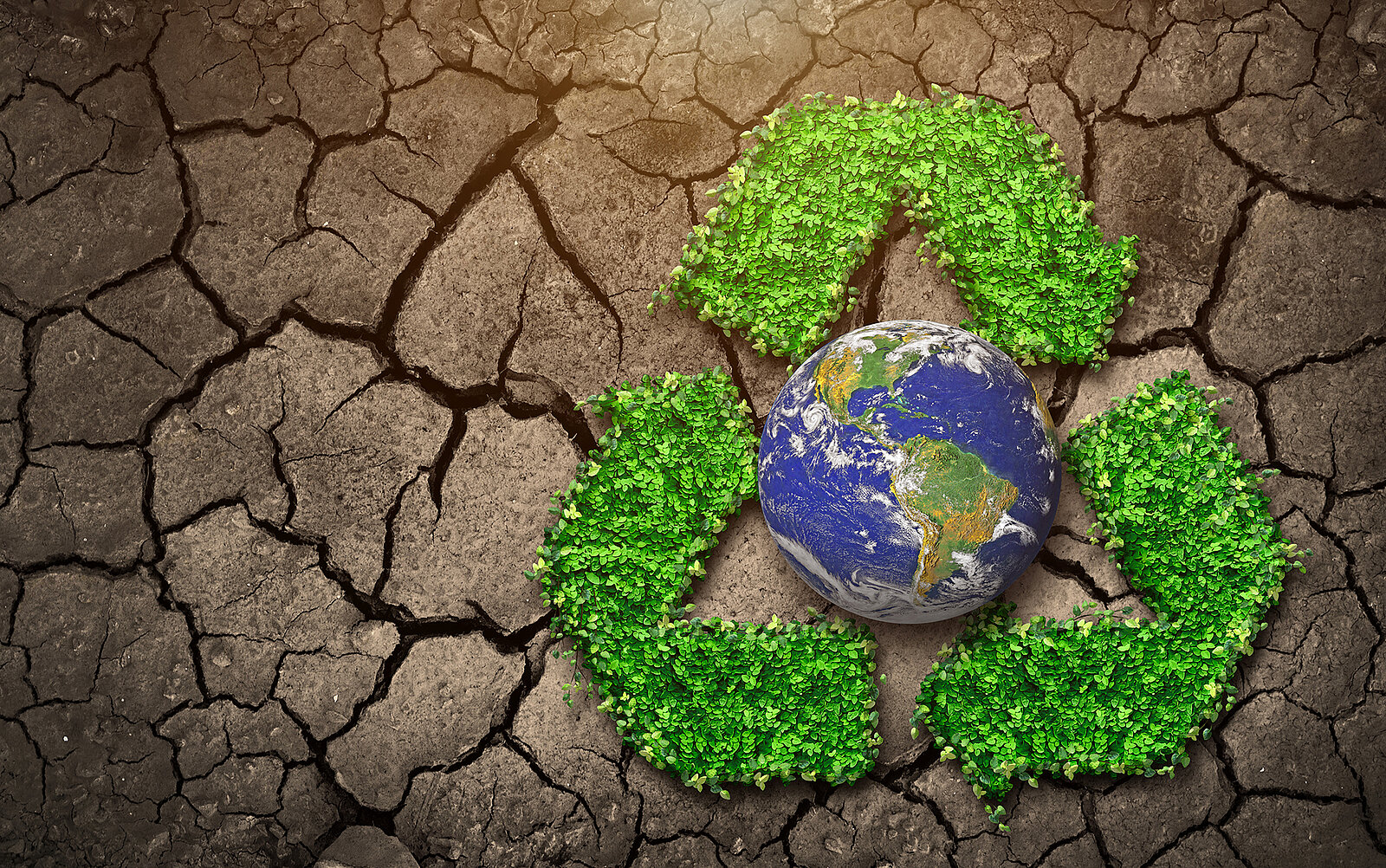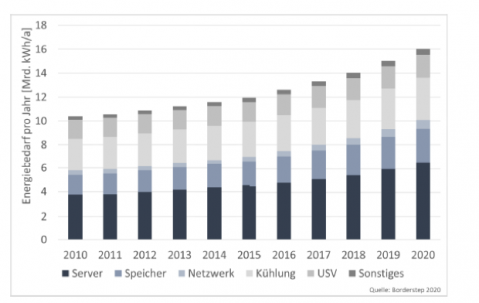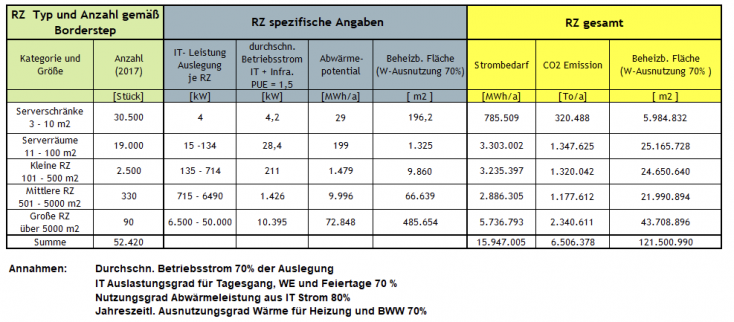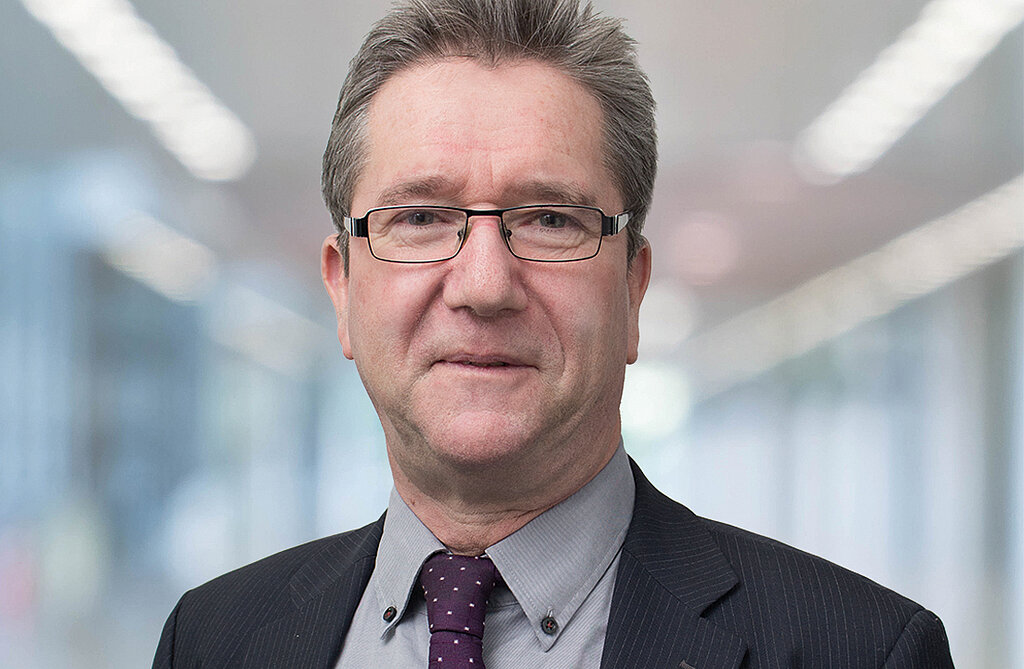The energy efficiency of data centers has improved significantly in recent years. Today, modern data centers with cold/warm aisle partitioning and free cooling have PUE values, i.e. quotients of total energy consumption to IT energy consumption, between 1.3 and 1.4. In 2010, it was still 1.98 [1] ƒ on average. The Blue Angel requires a value of less than 1.3 as a certification criterion [2].
In terms of infrastructure improvement, there is therefore hardly any room for optimization. It therefore makes sense to improve energy performance by using waste heat and thus contribute to climate neutrality, the implementation of which, as is well known, was once again called for by the Federal Constitutional Court in April 2021.
An appealing idea would be the following: Take the waste heat from the data center, which is 100% powered by electricity and otherwise only heats the microclimate, and use it to heat adjacent apartments; ideally using an existing district heating pipeline.
This does not mean singular individual solutions such as swimming pool heating and greenhouse heating. The challenge is rather to find solutions on a large scale, as is known from Sweden. Where many data centers join together sectorally and 10,000 or more homes are heated in this way [3, 4].
Is this wish feasible in Germany? How much of an increase in efficiency do such solutions offer?
Basics
Data centers in Germany consumed around 16 billion kWh of electricity in 2020 [1], emitting around 6.5 million tons of CO2. In terms of gross electricity consumption in 2020 of 559.3 TWh [5], this is 2.9%. By 2025, an increase of a further 12% to around 18 billion kWh is even expected. Thus, data centers are increasingly becoming a major single consumption factor.
According to Borderstep, energy consumption is distributed among approximately 52,500 data centers of various sizes.
The consumption and waste heat structures for the 5 data center categories described by Borderstep can be estimated quite well from the number and size data.
Against the background of a total electricity consumption of 16 TWh/a, the following distribution of electricity consumption, waste heat and CO2 emissions results: The real IT operating current was assumed to be 70 of the design value for this purpose, the PUE 1.5, the heat distribution losses 20%, the seasonal heat utilization 70% Based on this, the heatable living areas result. (heat demand 70 W/m [2]; 105 kWh/(m2Xa); hot water demand for 4 persons).
As expected, the waste heat potential from server racks and small server rooms does not offer the possibility of large-scale use envisaged here, despite their high number.
However, it becomes interesting already from IT capacities of small data centers of 140 kW. Even this seemingly low output is enough to supply around 10,000 m2 of new living space with heat for heating and domestic hot water. For medium-sized data centers with 900 kW, the figure is as high as 66,000 m2 , and for hyperscalers with an average operating power of 7.5 MW, the theoretical figure is as high as 485,000 m2.
Even though these figures are initial approximations which must be verified in each individual case on the basis of the network and demand structures available, they show that there is interesting potential which may even appear too great in the hyperscaler sector. In Scandinavia, however, this could be implemented [3]. In Stockholm, 10,000 residential units are supplied with waste heat from a network of more than 30 data centers. With an apartment size of 802 , this results in approx. 800,000 m2 of heatable area.
The situation in Germany still has room for improvement. In the large-scale residential sector in Germany, only one project with 400 apartments [6] has been implemented; in Westville near Frankfurt [7], the second with 1,300 apartments is currently being implemented.
Temperature levels of waste heat - the supply side
So how does waste heat get from the data center to the apartments? Is it possible to realize the wishful thinking of using the waste heat directly, feeding it into a distribution network and using it to heat apartments? The reality so far is different. 90% of data centers are air-cooled, only about 10% of the IT landscape is directly conditioned with water. The cooling is mostly generated by DX units in data center categories 1 and 2, and by chillers in the larger facilities.
Thanks to IT components with higher thermal loads and consistent cold/warm aisle separation in the white space areas, the supply air temperatures of air-cooled data centers have risen from 22 °C 10 years ago to 26 - 27 °C today. The cooling water temperatures of the cooling generators are usually 16 - 19 °C in the supply and 23 - 25° in the return. Thus, a temperature level of max. 25 °C water temperature is available as waste heat potential.
Servers with direct water cooling are the exception in standard data centers with a share of 5%. Although the temperature level achieved there, with values between 50 and 60 °C, would be ideally suited for direct use [8].
High-performance computers are also water-cooled, mostly in water temperature ranges of 30 to 45 °C, whose share is also around 5%. Here, one can find some waste heat uses in the university sector, but most of them use only small subsets of the heat potential.
The objective is thus clearly defined: If solutions are to be found for waste heat utilization on a large scale, then these must be developed for air-cooled data centers with a usable water temperature level of 25 °C in the foreseeable future.
What's available in Germany - the consumer side
The most obvious solution is to connect data centers to existing district heating networks. However, the existing network structure shows no congruence with data center locations in wide areas.
Added to this is the age of the district heating networks and the high operating temperatures. Most of them are from generation 1 -3 with water temperatures of around 100 °C and associated high heat losses. Only a few of generation 4 have a lower temperature level of 60 -70 °C. LowEx - or Generation 5.0 anergy networks with operating temperatures of 25 °C, into which the waste heat from air-cooled data centers could be fed directly, are virtually non-existent in Germany.
This new generation of networks, which require hardly any thermal insulation, usually couple sectors, and also often operate bidirectionally, using the hot and cold sides. Here, too, Sweden is a pioneer, but such supply structures are also being implemented in London, Munich and Berlin. In the tender for the energy supply of the Campus West of the University of Aachen from July 2021, such an energy network - i.e. a cold district heating network with sector coupling of the future RZ, is even explicitly put out to tender [11].
Connection to networks with operating temperatures of 100°C inevitably requires a complex heat pump cascade. The total annual coefficient of performance AZ of 2.25 that can still be achieved then, in conjunction with the high heat losses of the networks, make little sense, either ecologically or economically. The CO2 emissions are in the range of gas boilers, and the energy costs for generation alone, without taking into account the investments, are around 7 ct/kWh at German electricity prices of 0.17 €/kWh. In addition, there are the costs for the infrastructure.
In Sweden, where CO2 emission factors for electricity generation are just 2.5 % higher than in Germany at 10 g/kWh, and electricity prices are 6 ct/kWh, this is more feasible.
If the operating level of 60 -70 °C can be achieved with a single-stage heat pump, the balance can be significantly improved. AAC values of 4.5 are within the realm of possibility.
Only the cold Anergie or the LowEx networks offer ideal conditions. Here, the heat is not generated centrally, but on a building-by-building or apartment-by-apartment basis. The temperature lift from the 25 °C warm network is lower at 10 - 20 K, and annual performance factors of 7 - 9 are achievable. The energy efficiency is 3.5 times higher than with the heat pump cascade. CO2 emissions drop to values around 50 g/kWh, the production price to 1.9 ct/kWh.
Dr. Dieter Thiel
Head of Competence
Energy Concepts
Sources (German) [...]
- Hintemann, Borderstep 2020, Energiebedarf der Rechenzentren steigt trotz Corona weiter an
- RAL 01.2019, Energieeffizienter Rechenzentrumsbetrieb, DE-ZU-161
- Sara Wretborn, Stockholm Data Parks, 08.2017; Neues Rechenzentrum in Stockholm beheizt 10.000 Wohnungen
- Erik Rylander, Stockholm Data Parks, DC Day 2019; Integrating Data Centers in the modern sustainable City
- UBA, 2021, Stromverbrauch in Deutschland
- Müller, Ostler, 05.04.2019, Datacenter Insider; RZ Abwärme versorgt 400 Wohnungen
- Isabel Rittel, 2021, Rechenzentrum versorgt Neubauquartier Westville mit Wärme
- Jens Strukmeier, Cloud and Heat, Vortrag 2019; Im Keller ist noch Platz
- Fernwärmeleitungen; D5.1 Dataset Web-App (arcgis.com)
- RZ Standorte; www.datacentermap.com
- 07.2021; Teilnahmewettbewerb RWTH Aachen; Campus West Energieversorgung
Pictures: © pkproject / #280029328 / stock.adobe.com (Standard licence)



![Congruence of district heating pipelines [9] explained with a map of Germany](/fileadmin/user_upload/News/2109_Abwaermenutzung_aus_Rechenzentren/Karte-1.png)
![Congruence of data centers [10] explained with a map of Germany](/fileadmin/user_upload/News/2109_Abwaermenutzung_aus_Rechenzentren/Karte-22.png)



